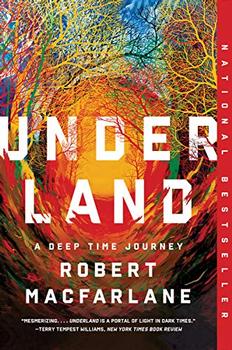Summary | Excerpt | Reviews | Beyond the book | Read-Alikes | Genres & Themes | Author Bio

A User's Guide to the Past, Present, and Future of Urban Life
by P.D. SmithWith erudite prose and carefully chosen illustrations, this unique work of metatourism explores what cities are and how they work. It covers history, customs and language, districts, transport, money, work, shops and markets, and tourist sites, creating a fantastically detailed portrait of the city through history and into the future.
For the first time in the history of our planet, more than half the population - 3.3 billion people - is now living in cities. City is the ultimate guidebook to our urban centers - the signature unit of human civilization. With erudite prose and carefully chosen illustrations, this unique work of metatourism explores what cities are and how they work. It covers history, customs and language, districts, transport, money, work, shops and markets, and tourist sites, creating a fantastically detailed portrait of the city through history and into the future.
The urban explorer will revel in essays on downtowns, suburbs, shantytowns and favelas, graffiti, skylines, crime, the theater, street food, sport, eco-cities, and sacred sites, as well as mini essays on the Tower of Babel, flash mobs, ghettos, skateboarding, and SimCity, among many others. Drawing on a vast range of examples from across the world and throughout history, City is extensively illustrated with full-color photographs, maps, and other images. Acclaimed author and independent scholar P. D. Smith explores what it was like to live in the first cities, how they have evolved, and why in the future, cities will play an even greater role in human life.
If you have ever loved a city and felt that you belong downtown somewhere, whether in the hot, fragrant roads of Bangkok or the buzzing streets of New York, there's something in PD Smith's City for you. Smith identifies what is unique and beautiful about many cities, providing both reasons for hometown pride as well as curiosity about foreign, lesser known places. This exploration builds up to a discussion about present and future urban life, but this aspect is tiny in comparison to the rest of the book's heft. City is a historical project, and the history that it uncovers is an exotic world that is both ancient and modern. Subsequently, readers see how cities have given birth to practices that are fundamental to humanity, such as writing, economics, and trade... This makes for a fun, optimistic read that is also highly informative and one that I'll return to as both a reference and for the pleasure of its photographs and curious anecdotes...continued
Full Review
(610 words)
This review is available to non-members for a limited time. For full access,
become a member today.
(Reviewed by Elizabeth Whitmore Funk).
In City, P.D. Smith observes that contemporary urban populations are steadily growing, and he predicts that by the middle of this century the majority of humankind will be living in urban areas that he terms "eco-cities." Some recent trends like urban homesteading, community gardens, and vertical farming provide a glimpse of what futuristic ecologically sustainable cities are like, and they are far from the polluted, smoggy worlds that are traditionally associated with cities.

While past generations have often perceived rural living to be an environmentally friendly practice, recent studies from economists like Edward Glaeser of Harvard University and NGOs (non-governmental organizations) like London's International Institute for...
This "beyond the book" feature is available to non-members for a limited time. Join today for full access.

If you liked City, try these:

by Robert Macfarlane
Published 2020
From the best-selling, award-winning author of Landmarks and The Old Ways, a haunting voyage into the planet's past and future.

by Mark Kurlansky
Published 2018
A city of tropical heat, sweat, ramshackle beauty, and its very own cadence--a city that always surprises--Havana is brought to pulsing life by New York Times bestselling author Mark Kurlansky.